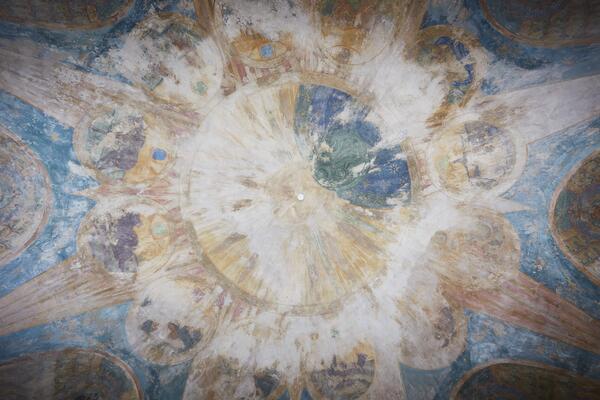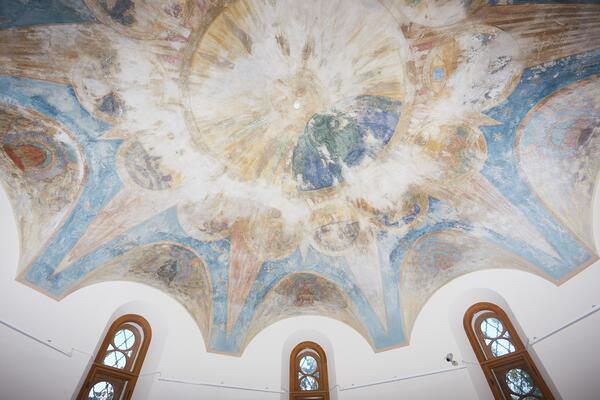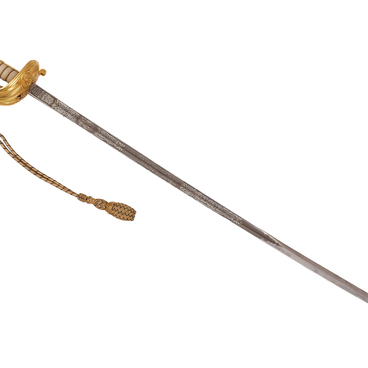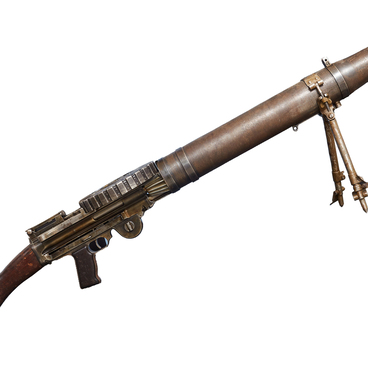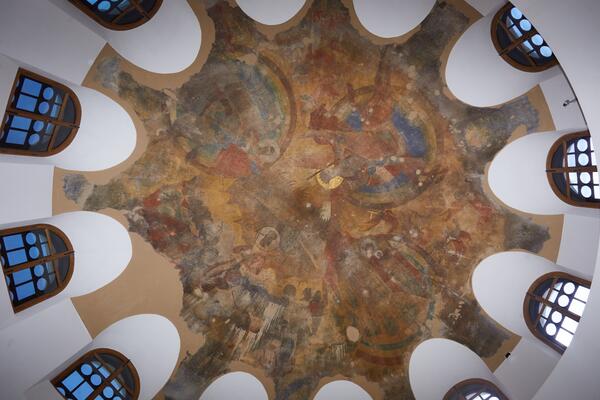The plafonds of all the main rooms of the Martial Chamber were decorated with a painting created by the Moscow workshop “The Heirs of P.P. Pashkov” under the guidance of Nikolay Pavlovich Pashkov.
The workshop was founded by Pavel Pashkov in 1865 in Moscow. The business was carried on by his sons Nikolay, Ivan and Georgy. In addition to Nikolay Pavlovich Pashkov himself, who, apparently, also created sketches of the frescoes, other artists of “The Heirs of P.P. Pashkov” workshop also painted the Martial Chamber. Those included S.D. Parilov, P.K. Silin, T.M. Shuvalov, I.K. Volkov, I.M. Galaev, I.N. Galaev, T.I. Karpov and N.A. Cherkasov.
The frescoes in the Icon Tower of the Martial Chamber repeat the plot of the painting that once decorated the ceiling in the wooden palace of Alexei Mikhailovich in Kolomenskoye: in the center is the sky with the sun and the moon — the eternal guardians of time and years — around which are 12 circles with images of zodiac signs, that is, the constellations through which the sun passes, making its visible annual path among the stars.
Nikolay Pashkov added images of the crowns of Princess Olga and Prince Vladimir, the helmet of Alexander Nevsky, and the princely and episcopal caps of Russian rulers to the lunettes, which gave the painting a new meaning: these elements symbolize the centuries-old history of the Russian state from the time of the formation of Orthodoxy in Rus to the beginning of the Romanov reign.
The painting of the Icon Tower complements the ceiling of the lobby: above the entrance door is an image of St. George on a horse, and on the opposite wall is the city (Heavenly Jerusalem), surrounded by birds of paradise — the Sirin and the Alkonost, sitting on the branches of a tree. Below, against the background of cannons, is a shield with the Russian coat of arms, which is supported by two lions, symbols of tsarist power. The side wall depicts the Lady of War and Victory standing on a cloud with a spear in one hand and a flower in the other. Below, in the cartouche, is the inscription “Blessed be the Lord my Rock, Who trains my hands for war, and my fingers for battle.”
The central place on the opposite wall was occupied
by an image of the horseman of death — the fourth horseman of the Apocalypse,
at whose feet lies a sword, and below was a cartouche with the inscription
“Behold, a pale horse. And the name of him who sat on it was Death, and Hades
followed with him. And power was given to them over a fourth of the earth, to
kill with sword, with hunger, with death, and by the beasts of the earth” (Rev
6:7-8).

